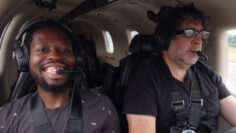The High-Flying Importance of Oxygen in Aviation: A Simple Guide
Quickfire Q&A About Altitude and Oxygen
A. When is oxygen needed on an aeroplane?
Additional oxygen typically becomes necessary for passengers onboard an aeroplane when the cabin altitude surpasses approximately 10,000 feet (3,048 meters). Beyond this altitude, atmospheric pressure falls significantly, reducing the oxygen content in our blood. This could lead to hypoxia, a state of oxygen deficiency that can be dangerous. The provision of extra oxygen is designed to prevent these symptoms and maintain passenger safety and comfort during the flight.
B. Are there exceptions?
Indeed, there are. Certain circumstances demand additional oxygen even at lower altitudes. For instance, flights carrying passengers with existing respiratory conditions or medical issues may require an extra oxygen supply below the 10,000 feet threshold. Similarly, during medical evacuation flights, the need for additional oxygen will depend on the patient’s medical condition. Decisions regarding supplemental oxygen use are based on passenger-specific needs and the judgment of the onboard medical personnel.
C. Does the requirement for oxygen vary with different aircraft types?
Yes, it does. The altitude at which additional oxygen becomes necessary can differ depending on the aircraft’s unique design and operational capabilities. Some aircraft maintain a lower cabin altitude even when flying high, reducing the need for extra oxygen. Conversely, non-pressurized aircraft flying at high altitudes might need to provide supplemental oxygen earlier. Factors such as pressurization capabilities, intended operational altitudes and specific aircraft features all contribute to the determination of oxygen requirements.







